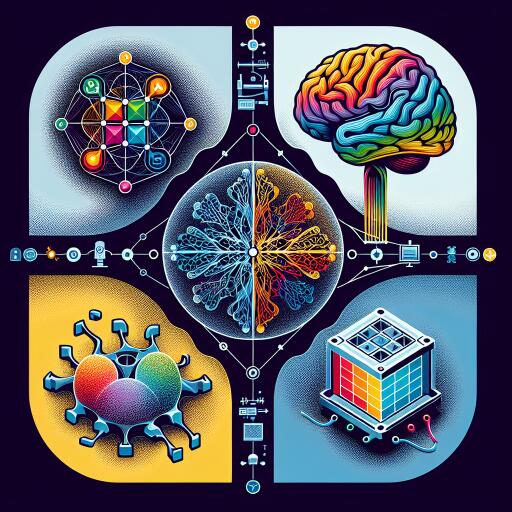Understanding the Four Paradigms of Generative AI Innovation
Generative Artificial Intelligence (AI) represents a significant leap forward in the technological landscape, embodying the most sophisticated form of AI technology. It heralds a new era of creativity and innovation, allowing for the generation of new content, images, and even whole new digital environments. This article delves into the four paradigms of Generative AI that are pushing the boundaries of what’s possible and shaping our future.
The Essence of Generative AI
At its core, Generative AI encompasses a variety of algorithms capable of generating new data samples that mimic the characteristics of data in their training sets. Unlike traditional AI, which relies on rule-based learning and pattern recognition, Generative AI leverages vast amounts of data to learn and create new outcomes never seen before. This capability has vast applications across art, design, gaming, medicine, and more, showcasing a range of possibilities that were previously unimaginable.
The Four Paradigms of Generative AI
1. Generative Adversarial Networks (GANs)
GANs operate through the interaction of two neural networks: the generator and the discriminator. The generator creates synthetic data, while the discriminator evaluates this data against real examples. Through their interaction, GANs are capable of producing highly realistic and sophisticated content, such as synthesized images, creative art pieces, and generated videos.
2. Variational Autoencoders (VAEs)
VAEs are designed to understand and replicate the distribution of data in a given dataset. By learning to encode data into a compressed representation and then decoding it to reconstruct the original input, VAEs can generate new data samples. These models are particularly prevalent in image and text generation applications.
3. Autoregressive Models
These models generate data sequentially, with each new piece of data depending on the previously generated elements. A prime example is the Generative Pre-trained Transformer (GPT), known for producing contextually relevant and coherent text. Autoregressive models follow the probability distribution of subsequent elements based on preceding ones, enabling the generation of new, unique data.
4. Recurrent Neural Networks (RNNs)
RNNs and their more advanced variants, such as Long Short-Term Memory (LSTM) and Gated Recurrent Units (GRU), excel in processing sequential data, like time series or natural language. They predict the next item in a sequence based on previous inputs, useful in applications ranging from anomaly detection to text generation.
Impact on Privacy and Security
While Generative AI has the potential to revolutionize numerous fields, it also poses unique challenges regarding data privacy and security. Applications range from enhancing data security measures to potentially risking data privacy through the generation of realistic synthetic data. The nuances of how each generative AI paradigm interacts with these concerns are critical for future development and ethical applications of this technology.
The Path Forward
The journey of Generative AI is characterized by a need for continuous improvement in model architectures, training methodologies, and ethical considerations. The future of Generative AI is bright but will require careful navigation of accuracy, mutual understanding, and control issues, alongside an ever-present awareness of ethical implications. Collaboration across disciplines will be essential to harness the full potential of Generative AI while ensuring its responsible use.
Conclusion
Generative AI has sparked a revolution, enabling a level of creativity and invention previously confined to the realm of imagination. Through the exploration of GANs, VAEs, autoregressive models, and RNNs, we are witnessing the emergence of unprecedented opportunities for innovation. As we venture further into the age of Generative AI, we embrace the challenges and possibilities this frontier presents, forging a future where imagination and intelligence converge in ways yet to be fully realized.
Generative AI is not just a technological advancement but a canvas for the future, inviting us to reimagine what is possible.










